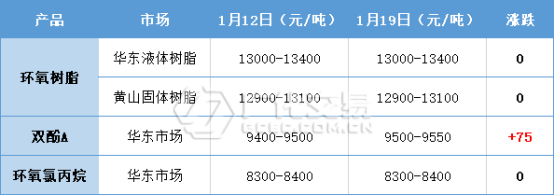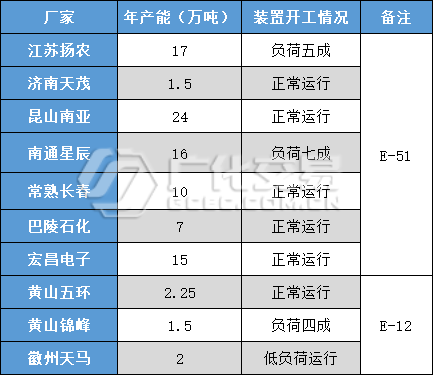1、 Market dynamics of raw materials
1.Bisphenol A: Last week, the spot price of bisphenol A showed a fluctuating upward trend. From January 12th to January 15th, the bisphenol A market remained stable, with manufacturers shipping according to their own production and sales rhythms, while downstream buyers in urgent need made flexible purchases based on market conditions.
However, starting from Tuesday, the price of raw material pure benzene has risen strongly, leading to a corresponding increase in the price of phenolic ketones, thereby increasing the production cost of bisphenol A. Faced with this situation, the willingness of producers and intermediaries to increase prices has significantly increased. At the same time, downstream markets are also actively stocking up, promoting increased trading activity in the bisphenol A market. As a result, market prices in various regions have experienced varying degrees of increase. By Thursday morning trading, the mainstream quoted price of bisphenol A had climbed to around 9600 yuan/ton, and prices in other regions had also risen. However, due to the stagflation and slight consolidation of upstream raw material prices, the purchasing enthusiasm in the downstream market has cooled down, and the high-level transaction situation has weakened.
Data shows that the industry’s operating rate reached 70.51% last week, an increase of 3.46% compared to the previous week. As of January 19th, the mainstream negotiated price for bisphenol A in East China is based on 9500-9550 yuan/ton, an increase of 75 yuan/ton compared to January 12th.
2. Epichlorohydrin: Last week, the market for epichlorohydrin operated steadily. During the week, due to the rising prices of raw materials propylene and liquid chlorine, as well as the weak adjustment of glycerol, the production cost of preparing epichlorohydrin using propylene method has increased, and the gross profit level has correspondingly decreased.
At present, the market supply and demand situation is relatively weak, and manufacturers generally hold a cautious attitude, with stable quotations. It is worth noting that facilities such as Dongying Liancheng, Binhua Group, and Zhejiang Zhenyang are still in a state of shutdown, while other production enterprises mainly focus on production and self use, and available spot resources are relatively scarce. However, some traders lack confidence in the future market, resulting in the existence of low-priced goods in the market. Downstream market demand has saturated after replenishment in the early stage, resulting in a decrease in inquiries for new orders entering the market. In addition, as the Spring Festival holiday approaches, some downstream enterprises may take an early holiday, which further weakens the trading atmosphere in the market. Meanwhile, actual transactions can be flexibly negotiated.
In terms of equipment, the industry operating rate remained at a level of 42.01% last week. As of January 19th, the mainstream negotiated price of epichlorohydrin in East China is based on 8300-8400 yuan/ton.
2、 Supply situation analysis
Last week, the operating situation of domestic epoxy resin factories slightly improved. Specifically, the operating rate of liquid resin is 50.15%, while the operating rate of solid resin is 41.56%. The overall operating rate of the industry reached 46.34%, an increase of 0% compared to last week. From the operating status, most liquid resin devices maintain stable operation, while solid resin devices maintain normal levels. Overall, the operating rate of the current industry is relatively low, and there is sufficient supply of goods on site.
3、 Changes on the demand side
The overall demand in the downstream market presents the characteristic of mandatory procurement, with relatively limited demand. At the same time, some downstream enterprises have gradually entered a parking state, further weakening market demand.
4、 Future Market Forecast
It is expected that the epoxy resin market will maintain low volatility this week. The price changes on the cost side are expected to remain stable, while downstream market demand follow-up will also be limited. As some downstream enterprises gradually withdraw from the market for holidays, the trading atmosphere in the market may continue to remain quiet. In this situation, on exchange operators will be more cautious in observing market dynamics and changes in demand, while also paying attention to the dynamics of upstream and downstream markets and the development of demand.
Post time: Jan-22-2024






